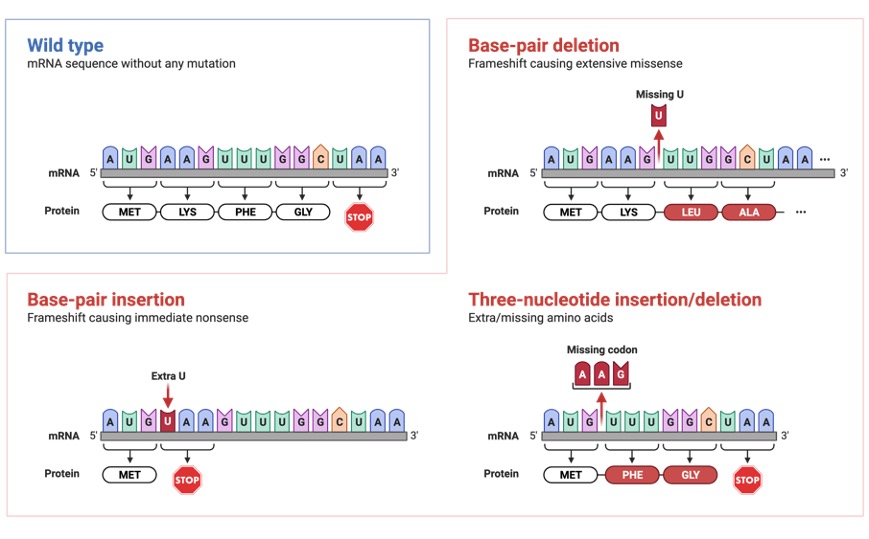Mutation Definition
The preceding mutation examples looked at changes at the chromosomal level. A DNA sequence’s nucleotide sequence is also vulnerable to mutation.
Deletion Mutation
Certain nucleotides are deleted in this region, which has an impact on the protein coding of proteins that employ this DNA sequence. If the cytosine nucleotide was deleted from an alanine-coding gene with the genetic sequence C-G-G, the alanine amino acid would not be able to be produced, and any other amino acids that were supposed to be coded from this DNA sequence would also be unable to be produced because each subsequent nucleotide after the deleted nucleotide would be out of place.

Insertion
The consequences are similar to those of deletion, in which a nucleotide is inserted into a genetic sequence and thereby changes the chain. Frameshifting is the modification of a nucleotide sequence.

Inversion
When a nucleotide sequence is reversed, it is not as dangerous as the mutations listed above. This is due to the fact that the nucleotides that have been reversed in order only affect a small fraction of the overall sequence.
Substitution
Due to the substitution of one nucleotide for another, any amino acid produced from this sequence will be affected. If the gene is required for the coding of haemoglobin, the consequences are severe, and organisms suffer from sickle cell anaemia.
All of the genetic mutations examined on the previous two pages have a detrimental impact and are undesirable, although in some situations they can be beneficial. Genetic mutations contribute to genetic variation and so play a significant role. They are also the cause of many diseases being passed down through the generations.







